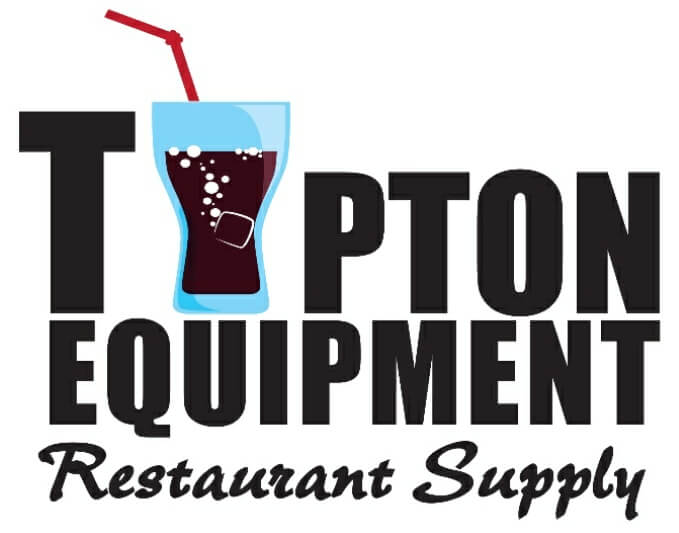What’s in a Cooking Pot? How to Choose the Right One
March 19, 2018As a restaurant owner, your cooking needs might vary.
Did you know that a good quality pot can greatly improve your cooking experience, while also improving the quality of your cooking? This cooking equipment is a very important one that cannot be done away with despite all of the advancements in technology.
Rather than purchasing many different sizes, shapes and kinds of this cooking equipment, a few carefully selected pieces might be all you need. Consider a few important tips to keep in mind when shopping for a quality pot.
Size
Size is a very important factor when selecting any cooking equipment. It is thus important that you are decided on size before you begin shopping. Keep in mind that pots vary wildly in size, generally ranging from 6 to 20 quarts for residential usage. However, as a restaurant owner serving a large customer base you might seek a bigger version of this cooking equipment, and you’d be sure to find those above 20 quarts if needed. But pots 12 quarts and above should do. Note that as a pot gets larger it is also likely to get heavier – depending on the pot material.
Materials
As with every cooking equipment, the materials from which pots are made play a huge role in their ease of use and specific functional applications. Consider a few:
Stainless steel: Smooth, shiny surface metal for easy visibility. It is a poor heat conductor, but it also is entirely nonreactive to any food type and very durable. It is also a very versatile cooking equipment for many food types.
Aluminum: They heat faster than stainless steel, and are usually very lightweight, but they also require more care and are more difficult to clean and maintain due to their ability to interact with foods that are acidic, alkaline, and sulfurous.
Copper: A great heat conductor, copper heats quickly and is warm on the eye. It is also highly reactive with food – interacting poorly with acidic and alkaline foods, but will last you if the pots are lined and you polish it often enough.
Non-stick Coating: High resistance to heat and abrasion, and useful for solid foods with high sticking possibility.
Cast iron: Heats up slowly but retains heat for long. It needs regular drying and oiling to keep it safe but that can be solved by purchasing one with enamel coating.
Shape
This cooking equipment comes in a variety of shapes. While they are conventionally tall and narrow, pots particularly designed for cooking soups are usually short and wide to allow for easy stirring. Wide pots, though, do not evenly spread heat around due to their large bases, while narrow pots are usually more consistent with their heat spread due to their narrow base.
Handles and Lids
As a restaurant owner, you would probably be needing this cooking equipment to not only serve you well on the stove but to also be heatproof for oven use. While you are likely to seek out handles that do not retain heat, such as plastic and wooden handles, these handles may have issues with heat. In this case, stainless steel handles are best for you. Properly welded handles might also serve you longer than riveted ones.
Construction
Pots with thick and heavy bases transfer heat at a much slower rate than thinner pots. These kind of pots are great for long, slow cooking. When this kitchen equipment has a thick base, it prevents ingredients from sticking to the bottom of pots. Pots with composite builds – whether these are all-clad composite pots or base insert composite pots – are also better at transferring heat evenly through a pot.
Choosing the right cooking equipment for you can feel overwhelming at times. But it shouldn’t be. Consider the types of food you’ll be cooking and the pots that will best satisfy these needs, also consider your budget (this cooking equipment can get really expensive when it becomes more specialized and advanced) when selecting the right one for you.
Questions to Ask Before You Invest in Kitchen Equipment
When you invest in kitchen equipment, you want to make sure you’re getting exactly what you need and that it will last you a long time. It can be overwhelming to think about everything you need when you’re starting a restaurant. Even if you’re just trying to add or...
Uh Oh. Handling Restaurant Disaster Recovery
No one wants to think about a major disaster hitting their restaurant. Unfortunately, it can happen at any time. In Arkansas, large areas (including Little Rock) were declared disaster areas as recently as last summer. Severe flooding, wind damage, and tornados are...
Restaurant Supplies You Need: Technology in Your Business
Every business is impacted by technology, and restaurants are no exception. There are dozens of ways to use technology to build your business, improve your efficiency, and serve customers better. Sometimes restaurant owners feel like they’re too busy to implement new...
Key Restaurant Equipment for a Fast-Casual Restaurant
Fast-casual dining has changed how America eats and has impacted what people expect in terms of convenience, price, and food quality. Generally, fast-casual food is affordable and higher-quality than pure fast food. It’s a step above a McDonald’s, without the price or...
Equipment for Your Restaurant: Choosing a Restaurant Concept
Some people who start a restaurant know exactly what they want. They either buy an existing restaurant with a concept, or they create the menu based on their family traditions or ethnic flair. However, not everyone who wants to start a restaurant knows exactly what...
Restaurant Supplies: Using Herbs to Add Flavor to Your Dishes
If you’re looking for new ways to attract people to your restaurant, consider the ways you can add flavor without adding fat or calories. Consumers are more and more concerned about the quality of what they eat, both at home and in a restaurant. Home cooks generally...
Commercial Kitchen Debate: Stainless Steel vs. Non-Stick Pans
If you run a commercial kitchen, you probably have a lot of ways of doing things that just seem right to you. For whatever reason, you decided between a gas and electric stove. You made decisions about dishware. And you probably have a position on the stainless steel...
Restaurant Equipment: How to Handle Gluten Allergies
In the last five years, you’ve probably seen a dramatic increase in the number of restaurant customers you have that are avoiding gluten. Some of them simply don’t like it, and others have a life-threatening reaction if they eat it. As a restaurant owner, you want to...
Reduce Food Waste: Proper Kitchen Equipment and More
Food waste is a reality in any commercial restaurant, but it doesn’t have to be accepted blindly. Too many restaurant owners or head chefs feel as though there is nothing they can do about this waste. Fortunately, there’s a lot you can do to reduce food waste in your...
Restaurant Supplies: Furnishing an Outdoor Sitting Area
Outdoor dining is a very enjoyable experience for many people. In Little Rock the weather is generally pleasant, although humidity may make it hard to eat outside on the hottest summer days. Adding an outdoor sitting area to your restaurant can be a great way to...
Commercial Kitchen Fun: The Wonder of Chocolate
If there’s anything that almost everyone loves as much as coffee, it’s chocolate. In fact, there are multiple celebrations of chocolate each year. Chocolate Day is on July 7th, because historically that’s when chocolate was first brought to Europe in 1550. Don’t miss...
Cooking Equipment Spotlight: Safe Indoor Grilling
Indoor grilling is a great way for your restaurant to delight customers without having to run a big charcoal operation out back. There’s nothing like grilled meat and vegetables to put a great aroma in the air and encourage hungry diners to dig in. There are two...
Restaurant Supplies: How to Properly Store Spirits & Drinks
Spirits and other alcoholic drinks can add a lot to your bottom line as a restaurant. These drinks often have high margins, and people order more than one frequently. This leads to more revenue for your restaurant and better tips for your servers! In order to make the...
Going Green Can Benefit Your Commercial Kitchen
Do you feel like running a restaurant means that you have to give in to wasted food, materials, and even money? Great news – you don’t. If you want to build your business, consider going green! You can structure your commercial kitchen to help the planet while also...
Key Foodservice Equipment for Your Food Truck
Are you ready to start a food truck? While the restaurant industry climbs slowly at roughly two percent a year, the food truck industry has been booming. Growing nearly 8% per year over the last five years, trucks are one of the fastest growing parts of the food...















